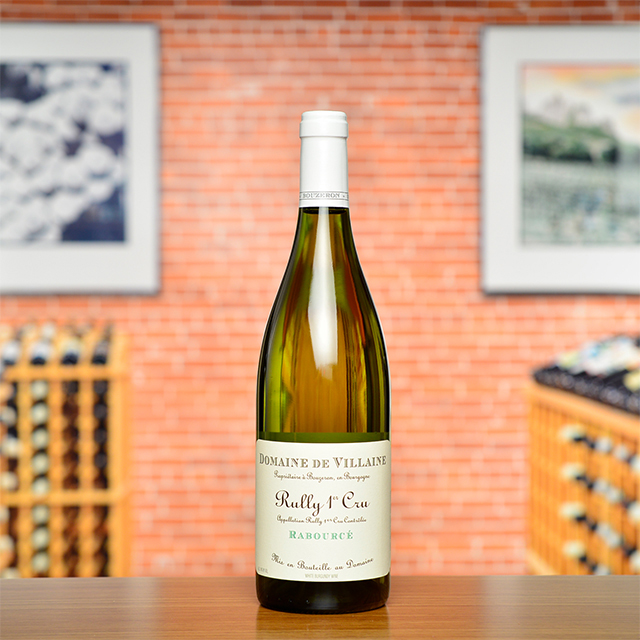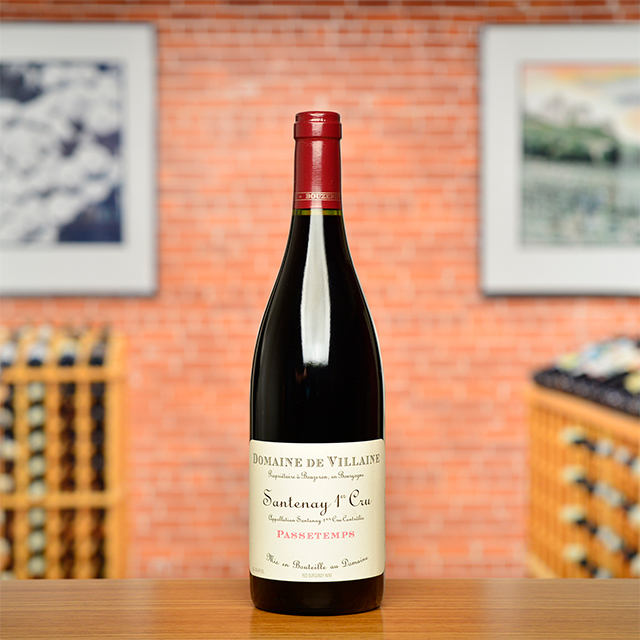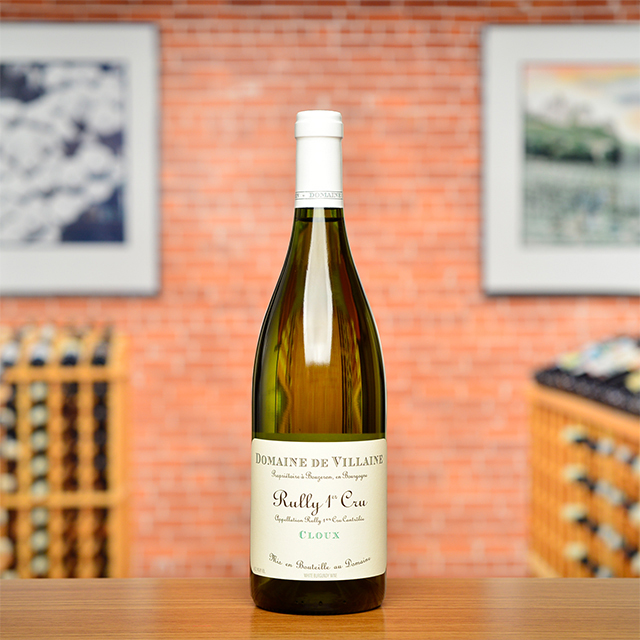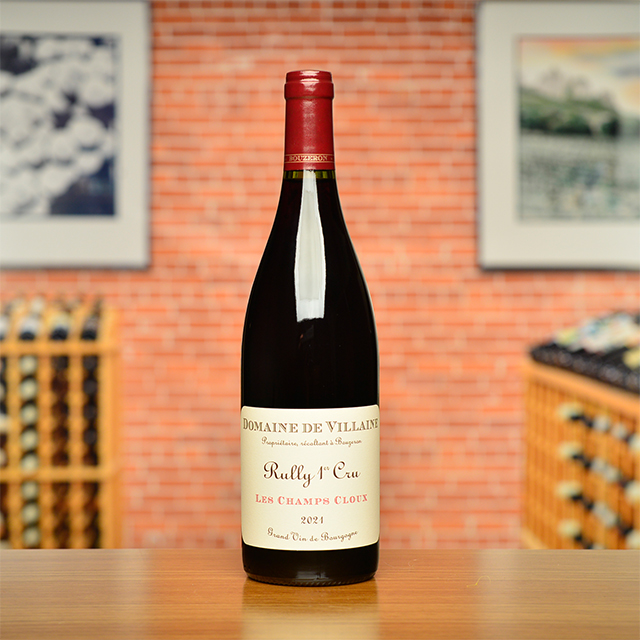Notify me
2017 Bouzeron Aligoté
A. & P. de Villaine

Pierre de Benoist (right) with his uncle Aubert de Villaine
For Domaine de Villaine, the 2017 vintage marks twenty years of life as a village-level Bouzeron AOC instead of a regional Bourgogne Aligoté, due, in large part, to the conviction of Pierre de Benoist and his oncle, Aubert de Villaine. As climate change sets in on Burgundy, Pierre is doing his part to ensure a bright future for his beloved Bouzeron. In addition to working organically and biodynamically, he created an Aligoté nursery to preserve the most well-adapted, genetically diverse, ancient clones. A deep and spiritual thinker, Pierre tends to evoke the celestial when describing his wines, and indeed there is something otherworldly about the vibrant and crystalline 2017 vintage.
—Jane Berg
| Wine Type: | white |
| Vintage: | 2017 |
| Bottle Size: | 750mL |
| Blend: | Aligoté Doré |
| Appellation: | Bouzeron |
| Country: | France |
| Region: | Burgundy |
| Producer: | Domaine A. & P. de Villaine |
| Winemaker: | Aubert de Villaine |
| Vineyard: | 10 - 90 years old, 12.5 ha |
| Soil: | Clay, Limestone, Marl |
| Aging: | The wine is raised for 10 to 12 months depending on the vintage |
| Alcohol: | 13% |
More from this Producer or Region

2022 Mercurey Rouge “Les Montots”
France | Burgundy
The finesse of the nose alone is somewhat overwhelming. This wine consistently impresses. It truly has it all.

2022 Bouzeron
France | Burgundy
Aligoté may actually be an even more precise conduit for Burgundian terroir than Chardonnay.

2022 Rully Blanc 1er Cru “Rabourcé”
France | Burgundy
Rabourcé is considered one of the top premiers crus in Rully. Its old vines sit on a steep clay and limestone slope and yield a complex, powerful white Burgundy.

2020 Rully Blanc 1er Cru “Les Margotés”
France | Burgundy
Evoking fresh orchard fruit, white flowers, and chalk, Les Margotés is remarkably pure and will continue to age beautifully over 10-15 years.

2022 Santenay Rouge 1er Cru “Passetemps”
France | Burgundy
From the southern edge of the Côte d’Or, this outstanding Santenay is so expressive, with notes of red fruit, rose petals, peonies, and a touch of spice.

2022 Rully Blanc 1er Cru “Cloux”
France | Burgundy
This wine contains serious energy, with aromatic finesse, refined bitter notes, and a long, elegant finish—sure signs of great things to come.

2023 Bourgogne Côte Chalonnaise Rouge “La Fortune”
France | Burgundy
This rouge is so silky and aromatic, reminiscent of strawberries and cherries. Open it over the next five years to fully enjoy its bright, fresh character.

2021 Rully Rouge 1er Cru “Cloux”
France | Burgundy
Vigneron Pierre de Benoist thinks the Cloux vineyard is arguably the best parcel for Pinot Noir in Rully.

2021 Rully Rouge 1er Cru “Les Champs Cloux”
France | Burgundy
Les Champs Cloux is fresh, with good acidity, but also among the domaine’s more robust reds.

2022 Bourgogne Côte Chalonnaise Rouge “La Fortune”
France | Burgundy
This rouge is so silky and aromatic, reminiscent of strawberries and cherries. Open it over the next five years to fully enjoy its bright, fresh character.
About The Producer
Domaine A. & P. de Villaine
About The Region
Burgundy

In eastern central France, Burgundy is nestled between the wine regions of Champagne to the north, the Jura to the east, the Loire to the west, and the Rhône to the south. This is the terroir par excellence for producing world-class Pinot Noir and Chardonnay.
The southeast-facing hillside between Dijon in the north and Maranges in the south is known as the Côte d’Or or “golden slope.” The Côte d’Or comprises two main sections, both composed of limestone and clay soils: the Côte de Nuits in the northern sector, and the Côte de Beaune in the south. Both areas produce magnificent whites and reds, although the Côte de Beaune produces more white wine and the Côte de Nuits more red.
Chablis is Burgundy’s northern outpost, known for its flinty and age-worthy Chardonnays planted in Kimmeridgian limestone on an ancient seabed. Vézelay is a smaller area south of Chablis with similar qualities, although the limestone there is not Kimmeridgian.
To the south of the Côte de Beaune, the Côte Chalonnaise extends from Chagny on its northern end, down past Chalon-sur-Saône and encompasses the appellations of Bouzeron in the north, followed by Rully, Mercurey, Givry, and Montagny.
Directly south of the Chalonnaise begins the Côte Mâconnais, which extends south past Mâcon to the hamlets of Fuissé, Vinzelles, Chaintré, and Saint-Véran. The Mâconnais is prime Chardonnay country and contains an incredible diversity of soils.
More from Burgundy or France
2021 Rully Rouge 1er Cru “Cloux”
Domaine de Villaine France | Burgundy
2021 Nuits-Saint-Georges 1er Cru “Les Chaignots”
Domaine Robert Chevillon France | Burgundy
2020 Pouilly-Fuissé “La Croix Vieilles Vignes”
Domaine Robert-Denogent France | Burgundy
2007 Vosne-Romanée 1er Cru “Aux Brûlées”
Domaine Méo-Camuzet France | Burgundy
2021 Rully Blanc 1er Cru
Domaine de Villaine France | Burgundy
2022 Marsannay Blanc “Les Longeroies”
René Bouvier France | Burgundy
2023 Côte de Nuits-Villages
Domaine Gachot-Monot France | Burgundy
2023 Marsannay Rouge “Clos du Roy”
René Bouvier France | Burgundy
2009 Aloxe-Corton 1er Cru “Les Vercots”
Domaine Follin-Arbelet France | Burgundy
2021 Marsannay Blanc “Clos du Roy”
Régis Bouvier France | Burgundy
2022 Bourgogne Côte Chalonnaise Rouge “Les Clous”
Domaine De Villaine France | Burgundy
2022 Santenay Rouge “Vieilles Vignes”
Bruno Colin France | Burgundy
2021 Rully Rouge 1er Cru “Cloux”
Domaine de Villaine France | Burgundy
2021 Nuits-Saint-Georges 1er Cru “Les Chaignots”
Domaine Robert Chevillon France | Burgundy
2020 Pouilly-Fuissé “La Croix Vieilles Vignes”
Domaine Robert-Denogent France | Burgundy
2007 Vosne-Romanée 1er Cru “Aux Brûlées”
Domaine Méo-Camuzet France | Burgundy
2021 Rully Blanc 1er Cru
Domaine de Villaine France | Burgundy
2022 Marsannay Blanc “Les Longeroies”
René Bouvier France | Burgundy
2023 Côte de Nuits-Villages
Domaine Gachot-Monot France | Burgundy
2023 Marsannay Rouge “Clos du Roy”
René Bouvier France | Burgundy
2009 Aloxe-Corton 1er Cru “Les Vercots”
Domaine Follin-Arbelet France | Burgundy
2021 Marsannay Blanc “Clos du Roy”
Régis Bouvier France | Burgundy
2022 Bourgogne Côte Chalonnaise Rouge “Les Clous”
Domaine De Villaine France | Burgundy
2022 Santenay Rouge “Vieilles Vignes”
Bruno Colin France | Burgundy
Our Guarantee

Our Guarantee
We only import wine we drink and enjoy ourselves, directly from the source.
Our wine tastes the same in your home as it did where it was bottled in Europe.
Like the long-term relationships we build with growers, we build long-term relationships with our clients. Have a question? Need wine advice? Just give us a call—510-524-1524.


















